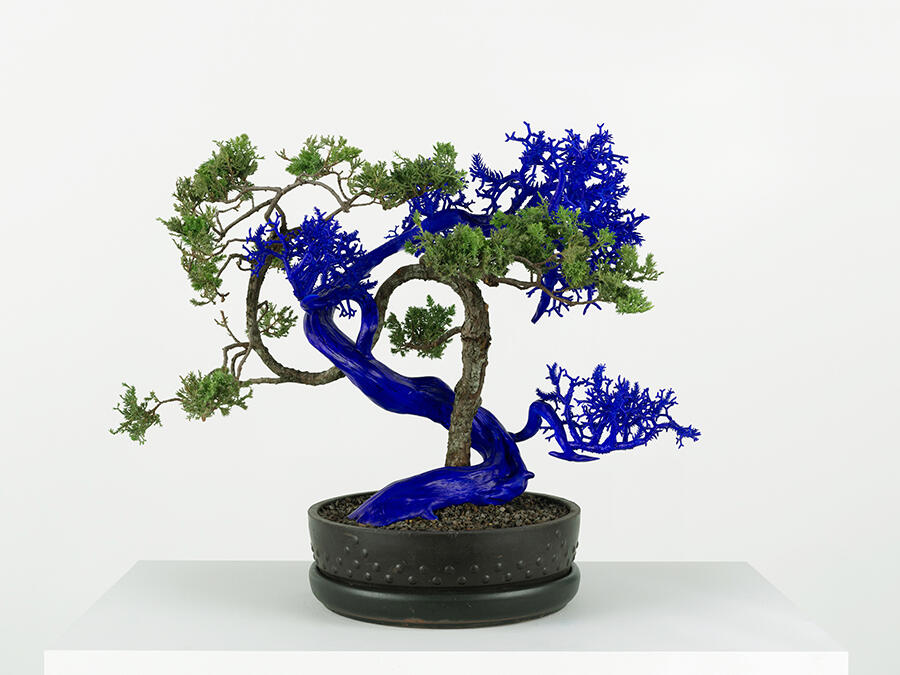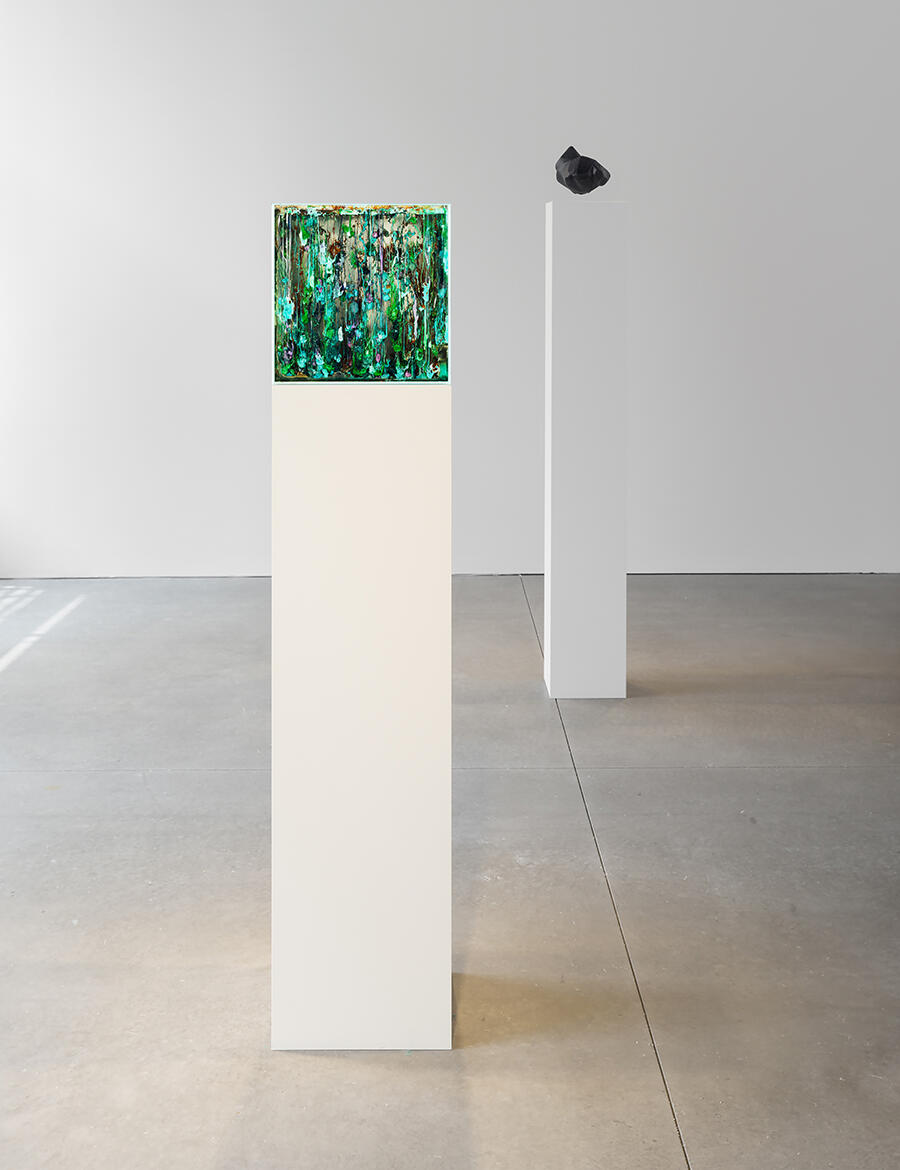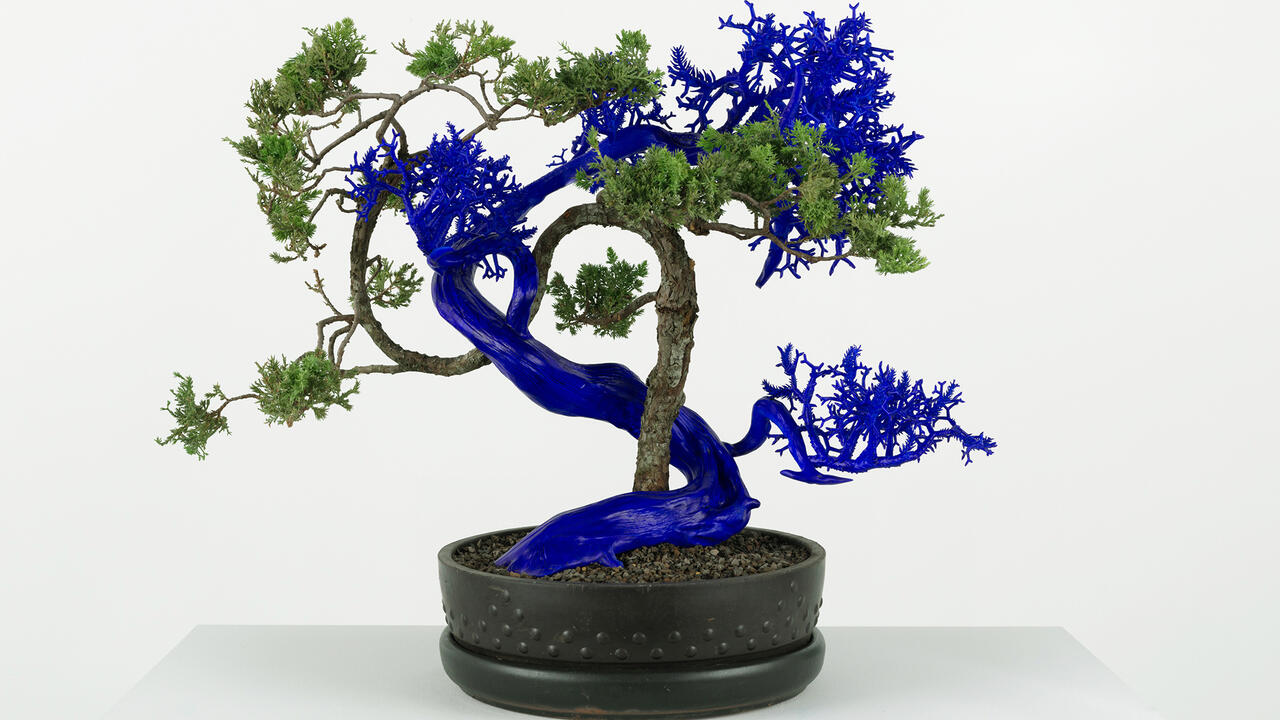In Jürgen Habermas’s Knowledge and Human Interests (1968), the philosopher explores the limits of what he refers to as the technical knowledge of the natural world. ‘No matter how far our power of technical control over nature is extended,’ he writes, ‘nature retains a substantial core that does not reveal itself to us.’ In the age of Donald Trump, a Newtonian worldview feels particularly inadequate; the microscope of the Enlightenment has been shattered by quantum and schizopolitical force. The more deeply we investigate the observable world, the less recognizable it becomes and the hotter the lithium-powered information swarm burns.
Agnieszka Kurant’s ‘COLLECTIVE INTELLIGENCE’ at Marian Goodman Gallery reckons with the ceaseless copy-pasting of new forms while resisting simple conclusions. Building on her long-standing interest in the phantoms left behind by deleted data, Kurant turns to the natural world, which she re-presents within the unnatural setting of a gallery. Through her distinctly curatorial form of sculpture, she draws associations between nature’s expressiveness and the laboratory’s desire to replicate it. Kurant’s organic matter never takes the form of a landscape. Instead, she suspends nature in mesoscopic systems of aesthetic display, presenting it through cross sections or atop a pedestal. With each representation of the natural world, she reveals an unfinished virtual design within nature’s depths, like a scratched-up copy of a world simulator.

The sculpture Post-Fordite 13 (2025) evokes an ecocidal sublime. This partially polished ‘stone’ made up of fragments of Fordite – an anthropogenic mineral composed of layers of enamel paint slag, accumulated over many years in automotive factories – reveals that the ghosts of industrialization have already replaced the world at the cellular level. Semiotic Life (2022/2025), meanwhile, finds harmony between the real and the copy. An electric blue, 3D-printed bonsai tree twists around the trunk and branches of a living one, alluding to the thicket of cultural objects, images and interpretations in which we find ourselves. This artificial tree’s growth pattern is the product of algorithmic prediction; ‘nature’, here, is more akin to the wall of trees within a video game, whose function is to limit further exploration. We are left remembering that information does not always lead to knowledge.

At times, Kurant’s work stops short, running the risk of leaving us only with the valorization of technology’s ability to integrate with nature, or with the perception of artists as transcendent engineers. The exhibition is most successful when it indexes a non-hierarchical interest in growth, like in Nonorganic Life 8 (2025), which is made of metal salts grown on anodized aluminium. This frieze feels exterior to traditional notions of beauty. It is in these tonalities that the eco-pessimism holds – when the artist seems uncertain of nature, and, refusing to see it as a legible material, instead uses it like an assisted readymade. In these works, Kurant locates an anti-picturesque that resists the impulse to present our environment as cathartic images.
At the exhibition opening, Air Rights 7 (2021), a black rock constructed from powdered stone that levitates above its plinth, was ringed by an audience posting it to their individual social media platforms. Its existence continues as an image, circulating through the vertical column of the screen on our phones; our vision is suspended in short looping videos like the rock above its pedestal. The more ‘COLLECTIVE INTELLIGENCE’ attempts to keep collectivity in view, the more it unworlds us, releasing technological phantoms. It is when we hold the virtual treeline and the natural one together in our sights that a potential new gaze forms, and we can sense the profound strangeness of both.
Agnieszka Kurant’s ‘COLLECTIVE INTELLIGENCE’ is on view at Marian Goodman Gallery, New York until 22 August
Main image: Agnieszka Kurant, Nonorganic Life 7 (detail), 2025, painting with crystals of metal salts (copper, cobalt, iron, nickel, manganese, chromium) grown on anodized, printed aluminium plates, 1.6 × 1.1 m. Courtesy: the artist and Marian Goodman Gallery; photograph: Elisabeth Bernstein
